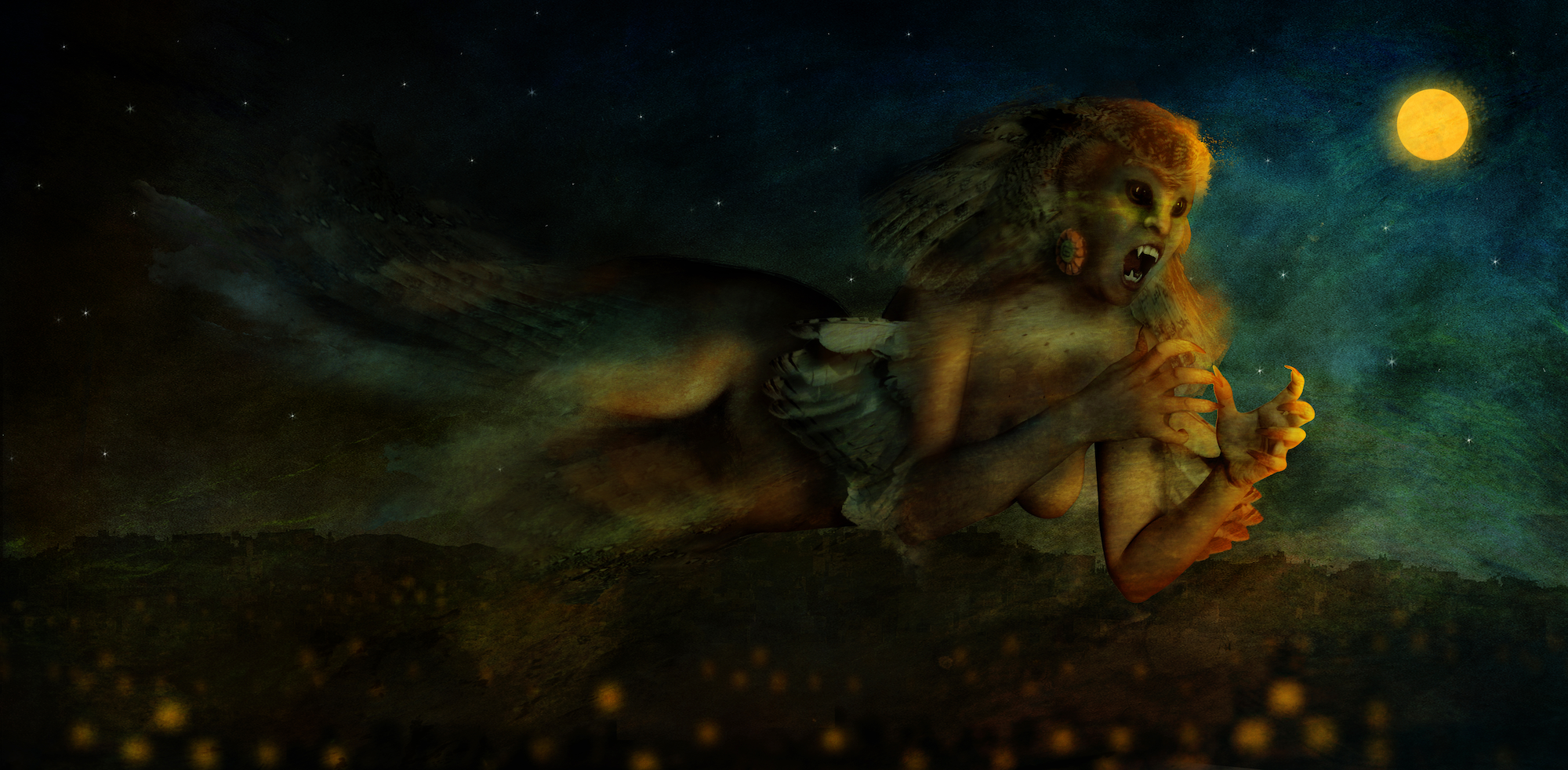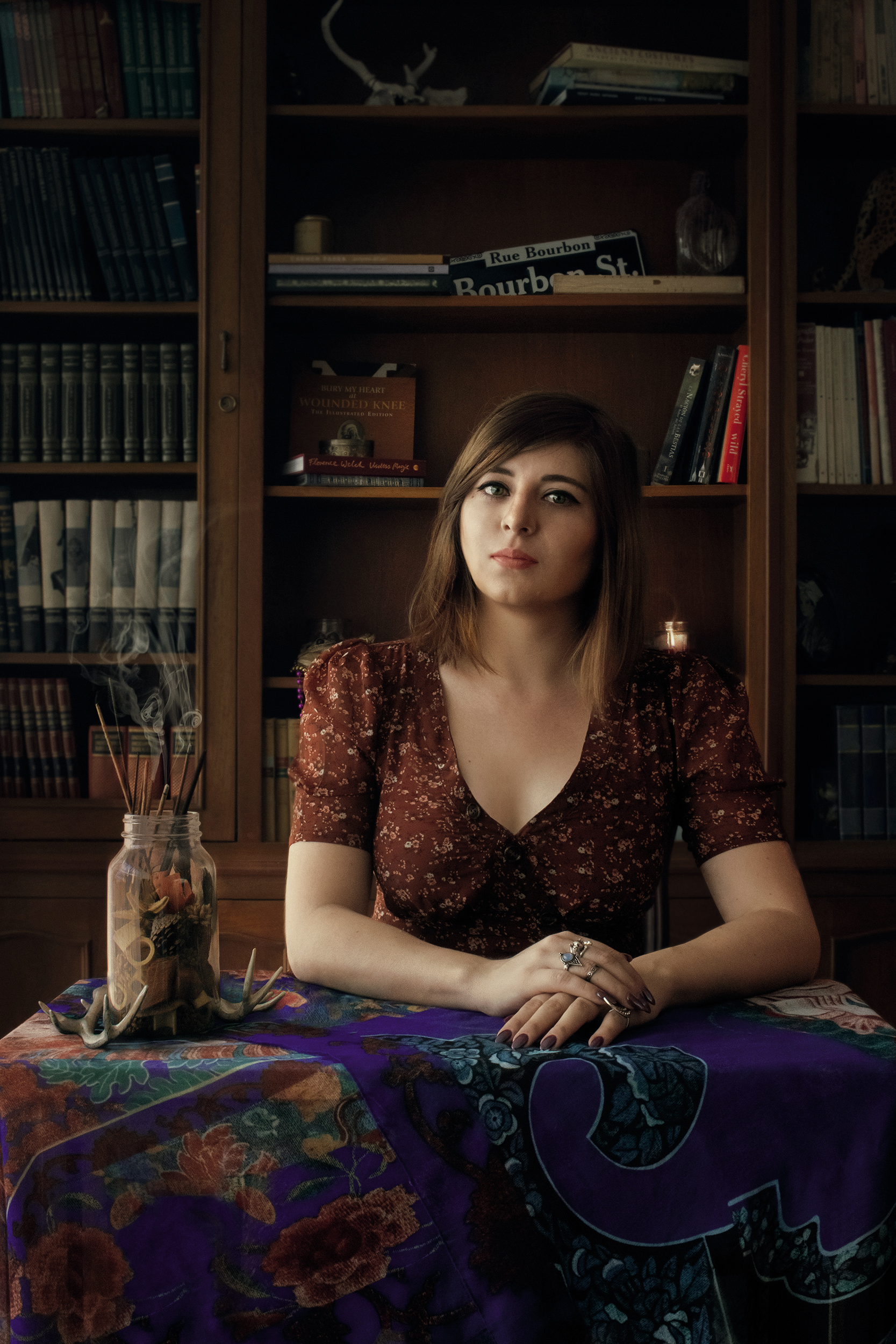Sep 5, 2019 | essay
Shapeshifting Sorcery: The Persistence of Mesoamerican Magic
by David Bowles
Illustrated by Mariana Palova | Edited by Julia Rios
Copyedited by Chelle Parker
When I was a kid, sitting with my cousins around a fire at the ranch, my uncle Joe Casas told us about a predator that kept sneaking onto his land, trying to kill or steal his cattle.
“Like a coyote,” he said. “Only not. Glowing eyes. A nagual. Some brujo who’s made a pact with Satan and learned to take on animal form.”
The image rattled me. I was primed to believe his tale, and not just by the darkness encroaching upon our meager circle of fire. A few years earlier, my grandmother Marie Garza had warned me to be careful of lechuzas — screech owls — as some of them were witches in disguise, waiting to prey on unsuspecting children. “They’ve sold their souls for that power,” she had explained. “And now they use it for evil deeds.”
For years I would lie awake at night, obsessing over the various denizens of the devil, trying to divine their opaque purposes.
It wasn’t until I was an adult that I understood these spooky tales of shapeshifting — often retooled into warnings for mischievous Mexican American kids — were remnants of something older, diluted by time and Conquest and Catholicism.
Of course, most Mexican Americans and Mexicans are mestizos, blends of Native and European. What happens when we peer into the less adulterated beliefs of modern indigenous communities?
We might start with the Nahua people of the southern Huasteca, an area including the little mountain town in Puebla where Raquel Castro’s chilling story is set. Descended from citizens of the Triple Alliance we call the “Aztec Empire,” these Nahuas preserve ancient beliefs in remote, rural pockets.
The people of Puyecaco, Veracruz, warn of sorcerers who transform into birds of prey and other animals to wreak havoc on the innocent. Tlacueptli, they whisper in Nahuatl. The Upside-Down Ones. In winged form, such a mage is known as a nahuali.
The nagual of my childhood fears.
But the Nahuas know the goal of this creature: it wheels through the night sky, seeking a likely home. You see, the nahuali feeds on unsuspecting folks while they sleep. It hungers especially for the sweet, untrammeled blood of babies.
The nahualmej (plural of nahuali) have no anti-Christian pact with Satan. They are thralls of Tlahuelilo, The Wrathful One, Lord of Mictlan, Land of the Dead. His alter ego is the Tlacatecolotl, The Owl Man, who emerges from graveyards and ancient ruins with a strigine retinue, all dark feathers and inhuman eyes.
The lechuzas that haunt the dreams of Chicano boys and girls. Harbingers of death. The people of Puyecaco understand their true import.
About 150 kilometers south, in the village of Tzinacapan, Puebla, the resident Nahuas also speak of what they call the nagualli — a sort of shapeshifting witch. But the wisest among them insist that not all nagualmeh (plural) are servants of the Miquitagat or Lord of Death. Plenty of adepts learn to tame their own nagual (animal twin) and to acquire additional animal forms without doing dark deeds (though they must placate the Miquitagat through offerings and rites).
Not far to the west is the state of Tlaxcala. In its rural towns, the nahual and nahuala are known, but more as tricksters than fearsome agents of death. Instead, Tlaxcalans dread the tlahuelpuchi, a sort of vampire that must feed once a month on the blood of children. The mechanism for this curse — no one chooses such a destiny — is that the vampire (normally a woman) must detach her legs from her body and then transform into a huge bird of prey: vulture, owl, etc. Then she flies into the night to seek a likely house, using an inherent magic to lull the family to sleep before she drinks from their little ones.
You can imagine how the embers of my childhood obsession were fanned back to life by these revelations. As I dug deeper, learning the Classical Nahuatl spoken at the time of the Conquest, five long centuries ago, I scoured primary documents for the source of these tales.
I was not disappointed.
The Aztecs had a special word for the transformation described by modern Nahuas in Tlaxcala and Veracruz: chīchyōtl, meaning the magic of witches who shapeshift into owls. The word comes from chīchtli, the witch owl. This process is a subcategory of the larger field of shapeshifting magic referred to as nāhuallōtl.
The practitioners of that magic were called nāhualtin (singular nāhualli, whence the Spanish and modern Nahuatl terms I’ve sketched above). And though, by the time of the Conquest, such sorcerers were most often associated with Tezcatlipoca, trickster god of chaos, many gods — including the lord of creation and order, Quetzalcoatl — were themselves nāhualtin, gifted with an animal double of great power.
None of them drank blood.
I was at a loss. Where had the vampirism arisen, if not in the original tales of shapeshifting gods?
At last I found it. The chronicles that describe how the Mexica — the last Aztec tribe to leave the ancestral homeland — were guided south by the war god Huitzilopochtli made flesh and his human sister Malinalxochitl, a wise priestess of the earth goddess Quilaztli. While Huitzilopochtli wanted to guide their people to bloody glory and conquest, his sister urged them to settle in the desert and follow a gentler path. Her followers were known as the tlatlahuihpochtin: luminous children.
When Malinalxochitl would not relent, her divine brother punished her in a most horrific way.
“So be it. Sister, as chief tlahuihpochtli, most illuminated of your little band, you are forever cursed. You abhor the forced spilling of blood, but now you will have to drink the blood of innocent children to survive. Detaching your legs, you will fly through the night, glowing with your erstwhile illumination, transformed into a turkey or buzzard, seeking once a month your horrible sustenance. This curse is upon you and all of your descendants.”
Thus the tlahuihpochtli, the luminous child, devolved into the tlahuelpuchi, the Mexican vampire, her spiritual debasement echoed by the linguistic garbling of the centuries.
The farther in space and time the story has spread, the more diffuse it has become.
The tlahuelpuchi gave way to the lechuzas that plagued my grandmother’s neighborhood and the naguales that fed on my uncle’s cattle, legendary figures echoed by the hybrid chupacabras of the modern age.
Yet I promise you, gentle friend, in the harrowing screech of the owls that cross South Texas skies at night, I hear Malinalxochitl weeping: bitter, betrayed, enraged.
I check my windows every evening.
Lock them up tight.
Pray for dawn.


